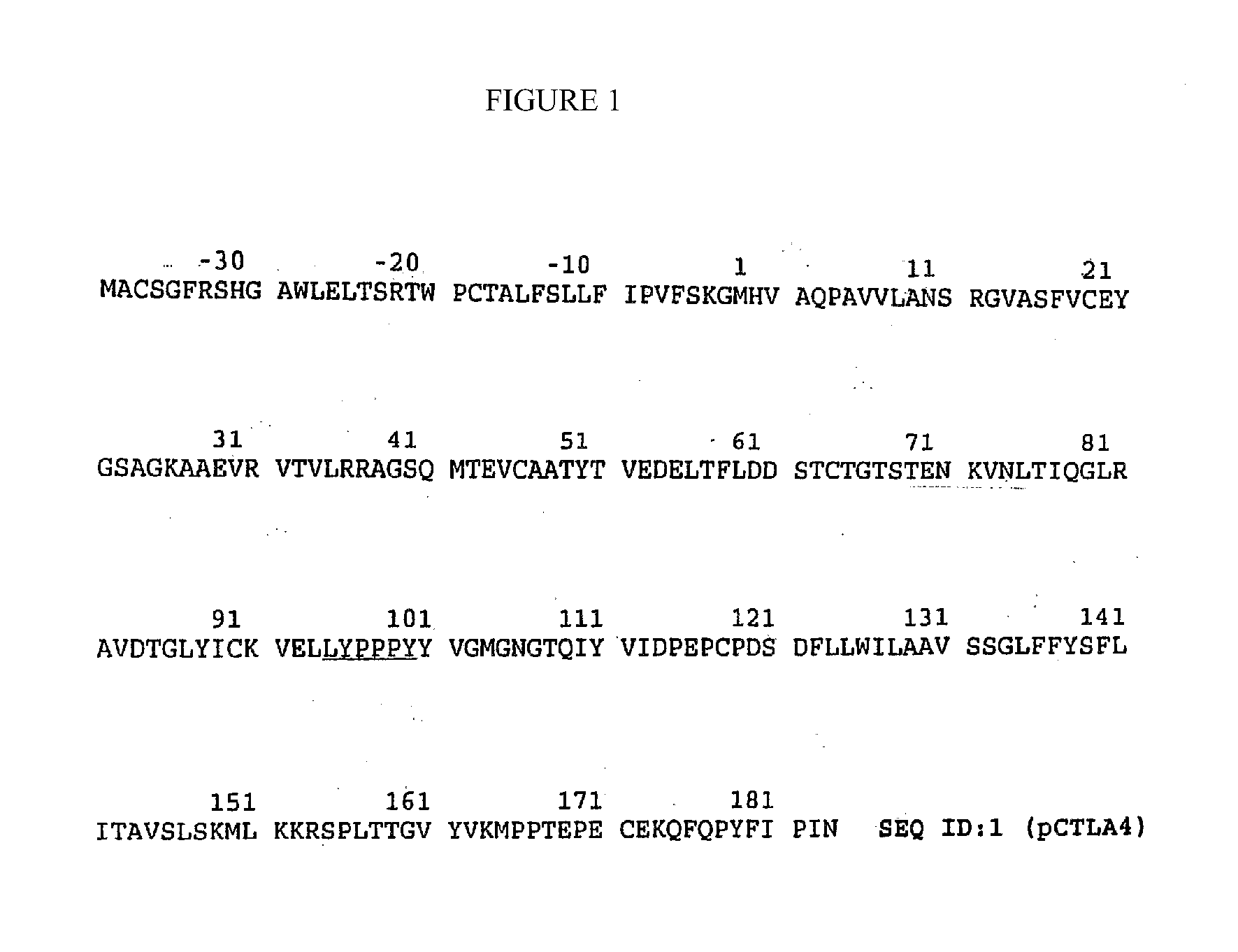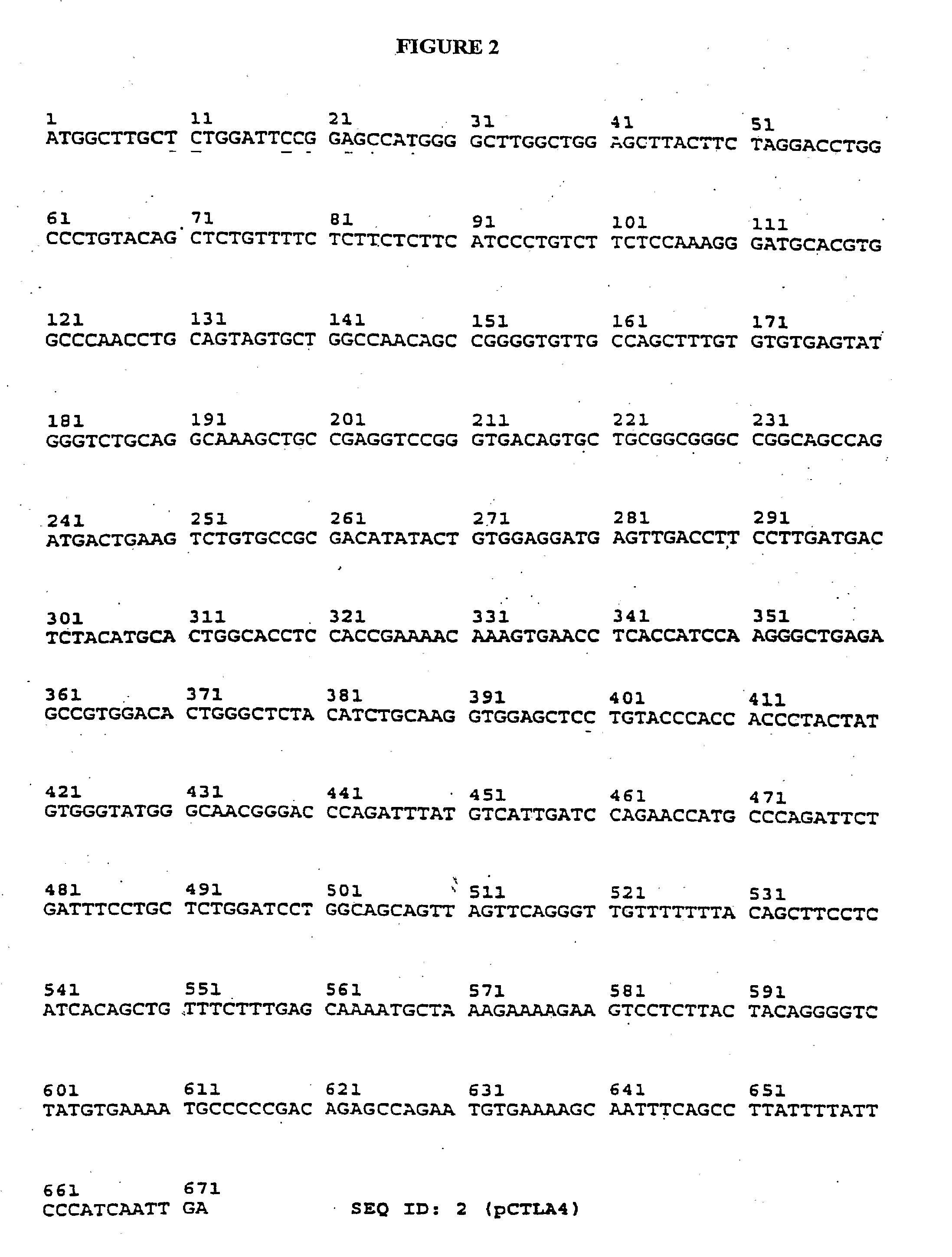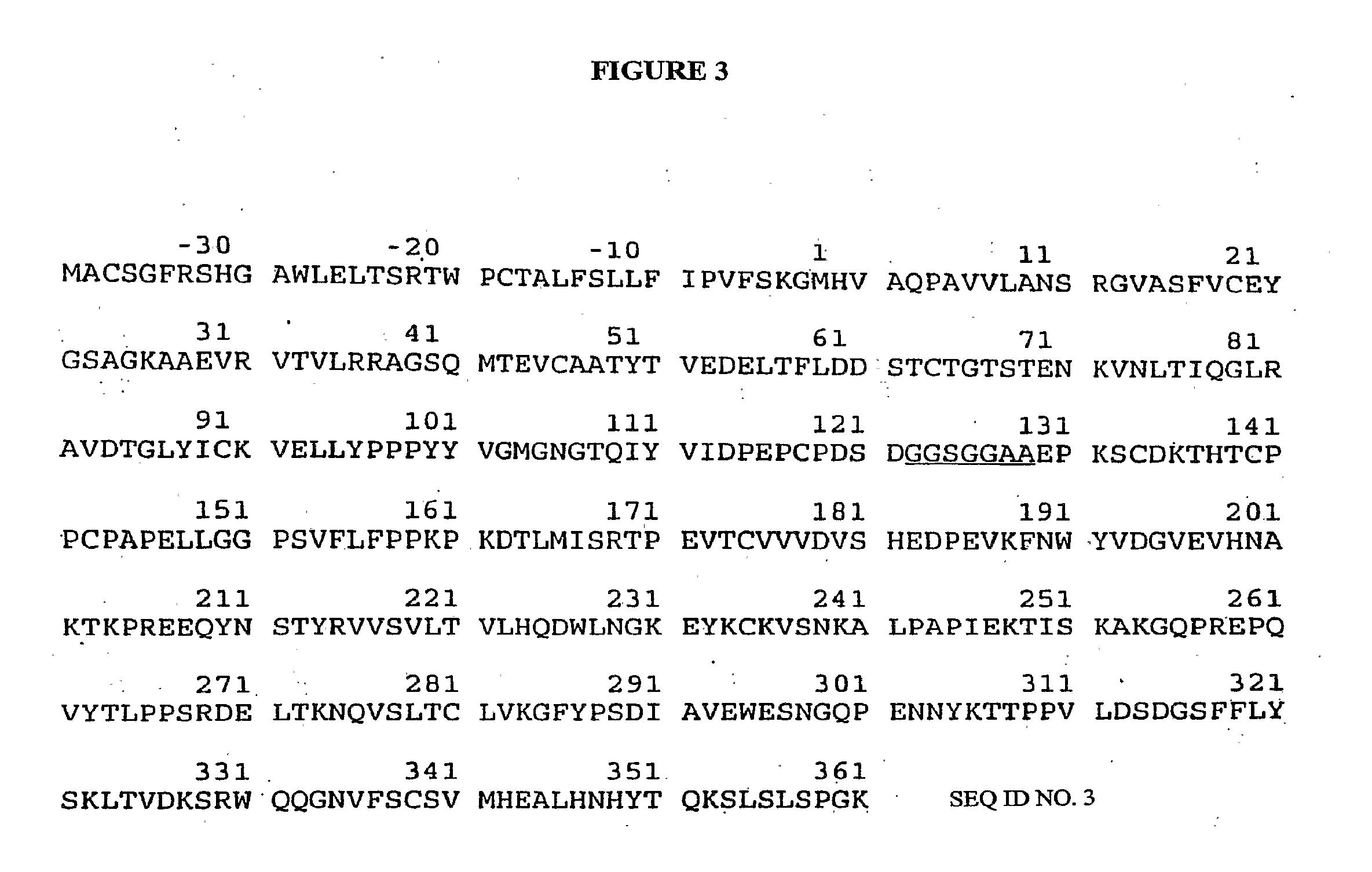Transgenic Ungulates Expressing CTLA4-IG and Uses Thereof
a technology of ctla4-ig and ungulates, which is applied in the field of transgenic ungulates, can solve the problems of antigen specific unresponsive state, difficult to overcome obstacles, and significant number of people dying, and achieve the effect of reducing or eliminating cell-mediated rejection of a xenotransplan
- Summary
- Abstract
- Description
- Claims
- Application Information
AI Technical Summary
Benefits of technology
Problems solved by technology
Method used
Image
Examples
example 1
Production of the pREV785 Construct
[0189]A construct was assembled containing the CTLA4-Ig transgene. The pREV785 construct contains the CTLA4-Ig transgene driven by the chicken beta actin promoter (ubiquitous expression) with additional enhancer and MAR sequences (FIG. 4). Complete sequence of the pREV785 plasmid comprising the pREV785 construct and associated vector backbone is shown in FIG. 5 (SEQ ID NO:4).
example 2
Production of the pREV792 Construct
[0190]A second construct was assembled containing the CTLA4-Ig transgene. The pREV792 construct contains the CTLA4-Ig transgene, driven by the rat insulin II promoter (tissue specific expression), with additional enhancer and insulator sequences (FIG. 6). Complete sequence of the pREV792 plasmid comprising the pREV792 construct and associated vector backbone is shown in FIG. 7 (SEQ ID NO:5).
example 3
Transfection of Cells with the pREV785 Construct
[0191]A fetal fibroblast cell line (DPFA11) was isolated from a fetus at day 40 of gestation. Fetuses were mashed through a 60-mesh metal screen using curved surgical forceps slowly so as not to generate excessive heat. The cell suspension was then pelleted and resuspended in DMEM containing 20% fetal calf serum, 4 ng / ml basic fibroblast growth factor. Cells were cultured three days, and cryopreserved.
[0192]For transfection, three different linearized DNA vectors were simultaneously introduced into cells by electroporation. One was the pREV785 construct described in Example 1 (2 ug, linearized with PacI / Swa I), and one was a construct containing a human CD55 gene driven by the chicken beta actin promoter (pPL675) (1 ug). The third (pREV 784) was a construct comprising the hTFPI (human tissue factor pathway inhibitor) gene, the chicken beta actin promoter and the CMV enhancer.
[0193]Twenty-four hours following transfection, human CD55 tr...
PUM
| Property | Measurement | Unit |
|---|---|---|
| time period | aaaaa | aaaaa |
| diameter | aaaaa | aaaaa |
| diameter | aaaaa | aaaaa |
Abstract
Description
Claims
Application Information
 Login to View More
Login to View More - R&D
- Intellectual Property
- Life Sciences
- Materials
- Tech Scout
- Unparalleled Data Quality
- Higher Quality Content
- 60% Fewer Hallucinations
Browse by: Latest US Patents, China's latest patents, Technical Efficacy Thesaurus, Application Domain, Technology Topic, Popular Technical Reports.
© 2025 PatSnap. All rights reserved.Legal|Privacy policy|Modern Slavery Act Transparency Statement|Sitemap|About US| Contact US: help@patsnap.com



